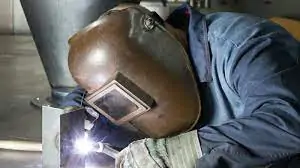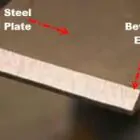Safety is a top priority when welding. The face and eyes are among the most vulnerable areas because they are exposed to ultraviolet or infrared radiation, sparks, spatters, and other welding-related environmental dangers. For this reason, welders of all skill levels should take their time selecting a welding helmet from the several alternatives available, such as passive or auto-darkening, constant or variable shade, two, three, or four sensors.
This safety gadget can significantly impact productivity and weld quality in addition to offering comfort.
The following eight factors should be taken into account when choosing your welding helmet:
1. Uphold high standards.
The helmet you select should adhere to either European BS EN 175:1997 or ANSI (*) z87.1 – 2003 standards, often known as ANSI Z87+.
2. Auto-darkening versus passive lenses.
When welders strike the arc, auto-darkening welding helmets go darker. According to the ANSI standard, the main benefit of this type of helmet is that even if the electronic components malfunction, it still offers some minimal levels of protection. All auto-darkening helmets that fulfil the specifications also offer 100 percent protection from UV and hazardous infrared radiation, and their shades can range from #8 for low-amp applications to #13 for high-amp ones.
Passive welders wear their helmets facing up and quickly nod or snap their necks to flip them into position just before striking an arc. They are a cost-effective option, but:
• For novices or non-experts, positioning the electrode while the helmet is fastened in place can be challenging. This may result in subpar weld starts, which could result in weld flaws or the requirement for additional grinding.
3. Fixed versus adjustable lens shades.
Depending on your welding requirements, you must choose between fixed and variable shade lenses if you picked an auto-darkening lens. Fixed can only get darker up to a certain shade, usually #10. These can be quite helpful to weld using just one procedure and one type of material. A variable-shade one is preferable for more procedures and materials.
4. The speed of the lens.
It is the amount of time it takes for the lens to become darker when a weld sparks. It ought to happen really quickly. The so-called “arc eye,” a pain and dry feeling in the eyes that can result in serious damage to the eyes, can be brought on by even a small delay. Speeds range from 1/20,000 for industrial or professional lenses to 1/3,600 for entry-level lenses. The lens’s reaction time increases with the size of the fraction.
5. Sensors for arcs.
The number of sensors that detect the weld sparks to initiate the darkening process differentiates basic from more advanced auto-darkening welding helmets. While more sophisticated helmets feature three or four, basic ones only have two.
6. Comfort and weight.
Welders who wear their helmets for a long time could keep these two things in mind to avoid neck pain and other problems. Here are some suggestions: pick a helmet that weighs one pound, adjust it to see whether it’s comfortable, and make sure the headgear and headband are also at ease, of high quality, and that they fit you.
7. A place to watch.
Every welding helmet has a different viewing area, so you should experiment with a few to find the one that fits you the best. Whether you prefer a wider viewing area or a smaller one that enables you to concentrate on a particular location depends on your preferences. The quality of the helmet has a direct effect on how you see the welding bead and its surroundings, which has an effect on the quality of your work.
8. Pick a reliable company.
This advice could be used for many different products and industries, but it is especially important for the welding industry. When working in hot environments or awkward situations, you must make sure your equipment is functioning properly. Large welding brands have years of expertise working closely with welders, offering top-notch equipment, and paying attention to their input.
When picking one brand over another, pay attention to the recommendations of your more experienced coworkers because they may have had experience with a variety of brands. Sometimes, it’s not only about the cost and the quality; it’s also about the customer service or the availability of replacement parts.
If you plan to or are already a professional welder, you should take your time selecting the welding helmet that is best for your circumstances.





